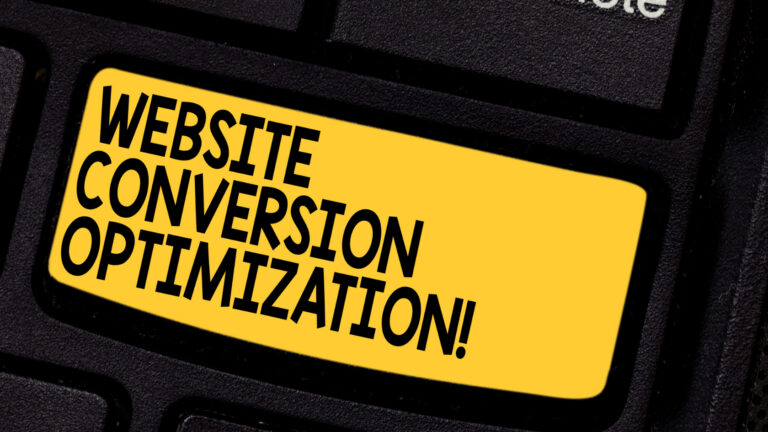
Did you know that implementing SEO strategies can significantly improve your landing page rankings? By optimizing your website with relevant keywords, meta tags, and a mobile-friendly design, you can enhance user experience and boost your page’s authority.
Additionally, building high-quality backlinks and maximizing page load speed can further engage your audience. Tracking and analyzing SEO performance metrics allows you to have complete control over your website’s success.
Discover why SEO is the key to elevating your landing page rankings.
Key Takeaways
- Incorporating relevant keywords and optimizing meta tags can improve the visibility of landing pages and attract organic traffic.
- Enhancing user experience by improving website architecture, prioritizing speed and responsiveness, and creating valuable and engaging content is crucial for SEO and ranking higher in search results.
- Building high-quality backlinks from authoritative and relevant sources can increase landing page authority and trustworthiness to search engines.
- Implementing a mobile-friendly design is essential for better rankings, improved user experience, and higher conversion rates.
The Importance of Relevant Keywords
To improve your landing page rankings, it’s essential to incorporate relevant keywords that align with your target audience’s search queries. Optimizing on-page elements and improving website architecture are two key strategies to consider.
When it comes to optimizing on-page elements, ensure that your title tags, meta descriptions, and headings contain the appropriate keywords. This helps search engines understand the content of your landing page and improves its visibility to users. Additionally, focus on creating high-quality, informative content that incorporates these keywords naturally.
When it comes to improving website architecture, prioritize user experience by organizing your content in a logical and intuitive manner. This includes using clear navigation menus, creating internal links, and optimizing your URL structure.
Optimizing Meta Tags for Better Visibility
Optimize your meta tags to improve the visibility of your landing page. Meta tags, such as the meta description and title tags, play a crucial role in search engine optimization (SEO). By optimizing these tags, you can enhance the visibility of your landing page and attract more organic traffic.
Firstly, focus on improving your meta description. This is the brief snippet that appears below the page title in search engine results. A well-crafted meta description can entice users to click on your page by providing a concise summary of its content. Incorporate relevant keywords and make it compelling to increase click-through rates.
Secondly, optimize your title tags. These HTML elements define the title of your web page and are displayed as the clickable headline in search results. Including relevant keywords in your title tags helps search engines understand the content of your page and improves its visibility.
Enhancing User Experience With SEO
To enhance user experience with SEO, there are three key points to focus on.
First, prioritize speed and responsiveness to ensure that your landing page loads quickly and smoothly.
Second, implement user-friendly navigation features that make it easy for visitors to find what they’re looking for.
Finally, create relevant and engaging content that provides value to your audience.
Speed and Responsiveness
Improve user experience with SEO by ensuring fast and responsive landing pages.
Speed and responsiveness are crucial factors in enhancing user experience and reducing bounce rate. When users visit your website, they expect it to load quickly and be easy to navigate. Slow loading times can frustrate users and lead them to abandon your site, increasing your bounce rate.
By optimizing your website’s speed and responsiveness, you can provide a seamless browsing experience, keeping users engaged and encouraging them to explore further.
Improving website design and implementing techniques such as caching, minimizing HTTP requests, and optimizing images can significantly enhance your site’s speed and responsiveness.
Don’t forget that user experience is a top priority for search engines, so investing in SEO to improve speed and responsiveness won’t only benefit your users but also positively impact your landing page rankings.
User-Friendly Navigation
Enhance user experience with SEO by prioritizing seamless and intuitive navigation on your landing pages. User-friendly navigation is crucial for improving accessibility and enhancing the visual appeal of your website.
When users land on your page, they expect to find information quickly and easily. A well-organized navigation menu with clear labels and logical groupings allows users to navigate through your content effortlessly.
Utilize dropdown menus, breadcrumb navigation, and a search function to provide users with multiple options to find what they’re looking for. Additionally, ensure that your navigation is mobile-friendly and responsive, as an increasing number of users are accessing websites on their smartphones.
Relevant and Engaging Content
Ensure your landing page provides users with relevant and engaging content to optimize their experience and boost your SEO rankings.
Creating content that’s both relevant and engaging is crucial for improving readability and increasing dwell time on your landing page. By offering valuable information that aligns with user intent, you can capture their attention and keep them engaged.
To enhance readability, consider using clear and concise language, incorporating headings and subheadings, and utilizing bullet points or numbered lists. Additionally, make sure your content is well-structured with proper formatting and spacing.
Engaging content can include compelling visuals, interactive elements, and multimedia that enriches the user experience. By focusing on delivering high-quality content that meets the needs of your target audience, you can’t only enhance user satisfaction but also improve your SEO rankings.
Building High-Quality Backlinks to Boost Authority
To boost the authority of your landing page, start by building high-quality backlinks. Backlinks, also known as inbound links, are links from other websites that direct users to your site. When search engines see that your landing page has a lot of high-quality backlinks, they perceive it as a trustworthy and authoritative source of information. This can greatly improve your page rankings in search engine results.
But not all backlinks are created equal. It’s important to focus on building high-quality backlinks from authoritative websites that are relevant to your industry or niche. These backlinks should come from websites that have high domain authority and a good reputation.
To build these backlinks, you can create valuable and shareable content that other websites would want to link to. This could be informative blog posts, infographics, or videos that provide useful information or insights. When other websites find your content valuable, they are more likely to link to it, thus creating high-quality backlinks.
In addition to creating great content, social media promotion can also help increase the visibility of your content and attract more backlinks. By sharing your content on social media platforms and engaging with your audience, you can encourage others to share your content and link to it from their own websites.
Utilizing Mobile-Friendly Design for Improved Rankings
One way to further enhance the authority of your landing page and improve its rankings is by implementing a mobile-friendly design.
In today’s digital landscape, mobile optimization is crucial for the success of your website. With the increasing number of users accessing the internet through mobile devices, search engines prioritize mobile-friendly websites in their rankings.
By optimizing your landing page for mobile devices, you ensure that it’s accessible and user-friendly on all screen sizes. A mobile-friendly design not only improves the user experience but also increases conversion rates.
Users are more likely to engage with your landing page and take the desired action when it’s easily navigable and visually appealing on their mobile devices.
Therefore, investing in improving mobile optimization is essential for the overall success and rankings of your landing page.
Maximizing Page Load Speed for Better User Engagement
Improving page load speed is crucial for enhancing user engagement and optimizing your landing page for better rankings.
In today’s fast-paced digital world, users expect websites to load quickly and provide a seamless browsing experience. Slow-loading pages can lead to frustration and high bounce rates, negatively impacting your user engagement metrics.
To improve your page load speed, focus on optimizing your website design and ensuring that your images are optimized for faster loading. Streamline your website code, minimize HTTP requests, and compress your images without compromising on quality.
Consider using lazy loading techniques to only load images when they’re in the viewport, reducing the initial load time. By prioritizing page load speed, you can create a positive user experience that keeps visitors engaged and increases the likelihood of them converting.
Tracking and Analyzing SEO Performance Metrics
To effectively track and analyze your SEO performance metrics, it’s important to understand the key indicators of success. These metrics can include:
- Organic traffic
- Conversion rates
- Bounce rates
- Keyword rankings
Important SEO Performance Metrics
When it comes to tracking and analyzing SEO performance metrics, you can’t afford to overlook the importance of using a double preposition. Monitoring the right metrics is crucial for understanding the effectiveness of your SEO efforts and making data-driven decisions.
Two key metrics to focus on are conversion rate and organic traffic. Conversion rate measures the percentage of website visitors who take a desired action, such as making a purchase or filling out a form. It helps you gauge the effectiveness of your landing pages and optimize them for better results.
Organic traffic, on the other hand, refers to the number of visitors who reach your website through search engine results. By tracking this metric, you can assess the impact of your SEO strategies and identify areas for improvement.
Optimizing Landing Page
Track and analyze the effectiveness of your SEO efforts on your landing page by focusing on two key metrics: conversion rate and organic traffic.
Conversion rate refers to the percentage of visitors who take a desired action, such as making a purchase or filling out a form. By optimizing your landing page for conversion, you can increase the likelihood of turning visitors into customers. A/B testing is a valuable tool for conversion optimization, allowing you to compare different versions of your landing page and determine which performs better.
Organic traffic, on the other hand, measures the number of visitors who arrive at your landing page through search engine results. By tracking organic traffic, you can assess the impact of your SEO strategies and make informed decisions to improve your rankings and attract more organic visitors.
How Does an Effective SEO Strategy Impact Landing Page Conversions?
An effective SEO strategy not only drives traffic to a website but also optimizes the user experience. A wellcrafted landing page increases conversions by providing relevant, engaging content and a clear call to action. By aligning SEO efforts with landing page design, businesses can improve conversion rates and ultimately drive more sales.
Final Thoughts
Implementing SEO strategies on your landing page is crucial for improving its rankings and visibility. By optimizing meta tags, incorporating relevant keywords, and enhancing user experience, you can significantly boost your page’s authority and engage users effectively.
Additionally, building high-quality backlinks and utilizing a mobile-friendly design are essential for improving your page’s SEO. Backlinks from reputable websites can increase your page’s credibility and visibility in search results. Meanwhile, a mobile-friendly design ensures that your page is accessible and usable for users on mobile devices, which is vital considering the increasing number of mobile searches.
Furthermore, maximizing page load speed is another important aspect of SEO. Users expect fast-loading pages, and search engines take page speed into account when determining rankings. By minimizing unnecessary code and optimizing image sizes, you can improve your page’s load speed and enhance the user experience.
In summary, implementing these SEO strategies can significantly improve your landing page’s rankings and visibility, driving organic traffic and generating leads for your business. Considering that websites on the first page of search results receive 92% of all traffic, investing in SEO is crucial for staying competitive in the online market.
- How to Plan a Content Calendar That Works - 29/10/2025
- SEO Content vs. Social Media Content: What’s the Difference? - 23/10/2025
- The Best Types of Content for Service Businesses - 16/10/2025


